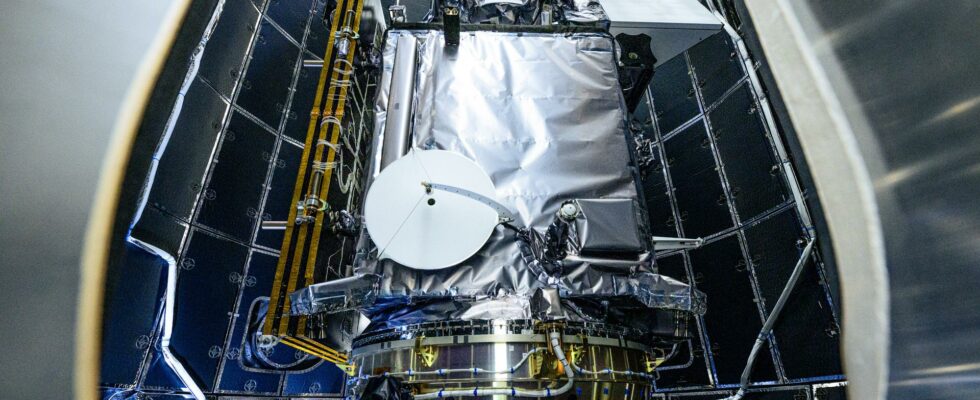The new PACE satellite (Plankton, Aerosol, Cloud and ocean Ecosystem) is ready to take off! An important mission for better understand the oceans and their day-to-day condition via the study of its light spectrum, that of atmospheric air masses and clouds. A jewel worth almost a billion dollars…
For the scientific teams who have been waiting for this moment for more than 10 years, the takeoff of the PACE satellite is a period of significant stress. Scheduled for February 6, it was postponed by 24 hours due to unfavorable weather conditions in Florida, from where SpaceX is launching its Falcon 9 rocket. Under the hood, PACE is in the starting blocks. It should reach, a few hours after its launch, a polar orbit at 676 km altitude and 96° inclination… And it was not won: on several occasions, politicians tried to cancel or postpone the PACE mission to save money in recent years. However, despite its cost of around $948 million all inclusive, it was able to reach the launch site. Its mission is planned for 3 years, but it carries enough fuel to continue its measurements for a decade, if all goes well.
PACE (and love), what it contains
PACE carries three instruments, the main of which is the OCI for Ocean Color Instrument, an optical spectrometer with a precision unlike any previous space sensors. Enough to record and detect tiny variations on the ocean surface, which provides a lot of information on the composition and health of this ecosystem.
In particular, OCI makes it possible to monitor the evolution of phytoplankton types. “ These are important parts of the carbon cycle, they are incredibly important to track in the medium term. But there are also short-term observations, such as the impact on fisheries and coastal areas, including beaches. Around 60% of the world’s population lives within 100 km of the ocean, so we don’t see it every day, but this ecosystem touches our lives! » explains James Werdell, the scientific manager of the mission. The two other PACE instruments are the SPEXone spectro-polarimeter (specialized in the characterization of aerosols in the lower atmosphere) and the HARP2 polarimeter, which will also observe aerosols, but in particular those which are involved in the formation of clouds.
One of the new terrestrial observation tools
The OCI and HARP2 instruments are instruments with a very wide swath (their field of view), which will allow them from almost 700 km altitude to cover all of the oceans every day. Particularly important for phytoplankton, explains J. Werdell, since the latter moves and evolves within 24 hours, particularly near coasts where the influence of meteorological and geographical conditions is strong. SPEXone, for its part, is a “zoom” that will observe much more restricted areas, but at high resolution to understand the dynamics of aerosols. It will take around 30 days for it to cover the entire globe.
PACE should begin its scientific campaign in April, 60 days after takeoff. And good news for laboratories around the world, the data will be freely available. NASA officials hope to make it an additional tool for decision-makers and politicians. PACE is therefore part of a new generation of experimental scientific satellites, with for example Aeolus (ESA) or SWOT (NASA/CNES).
Source : SpaceFlight Now

0